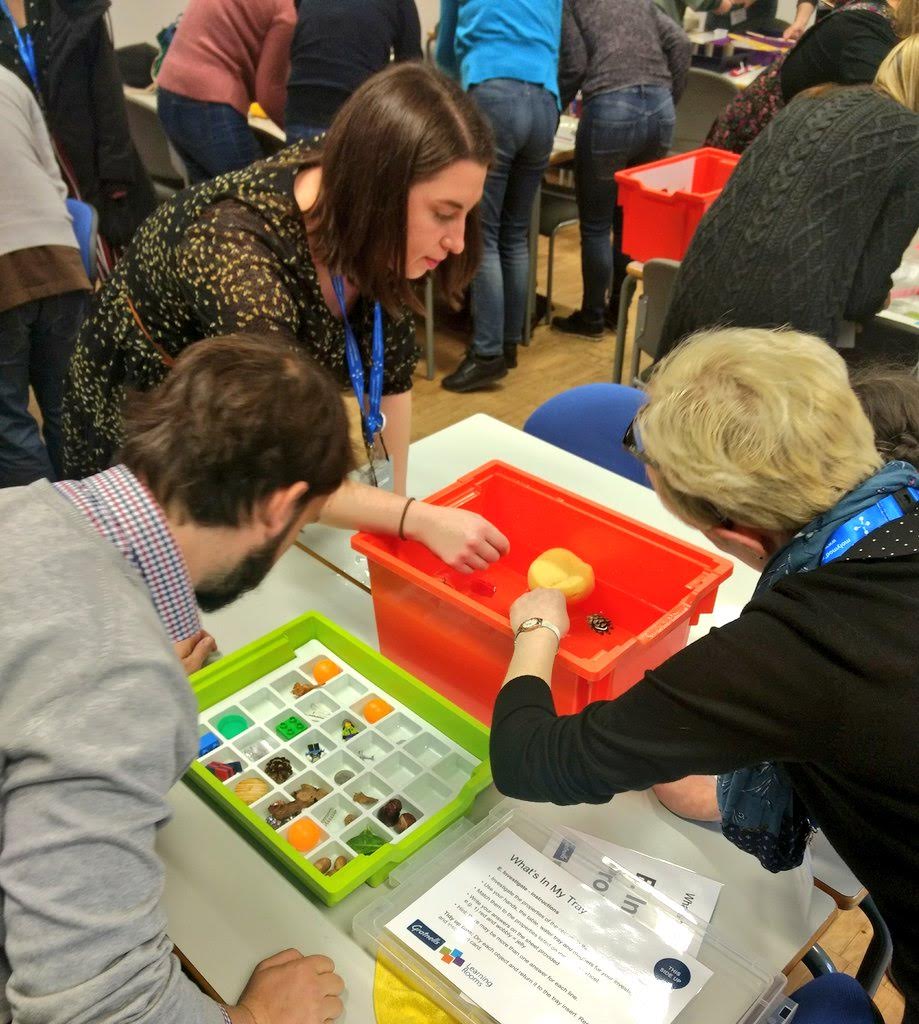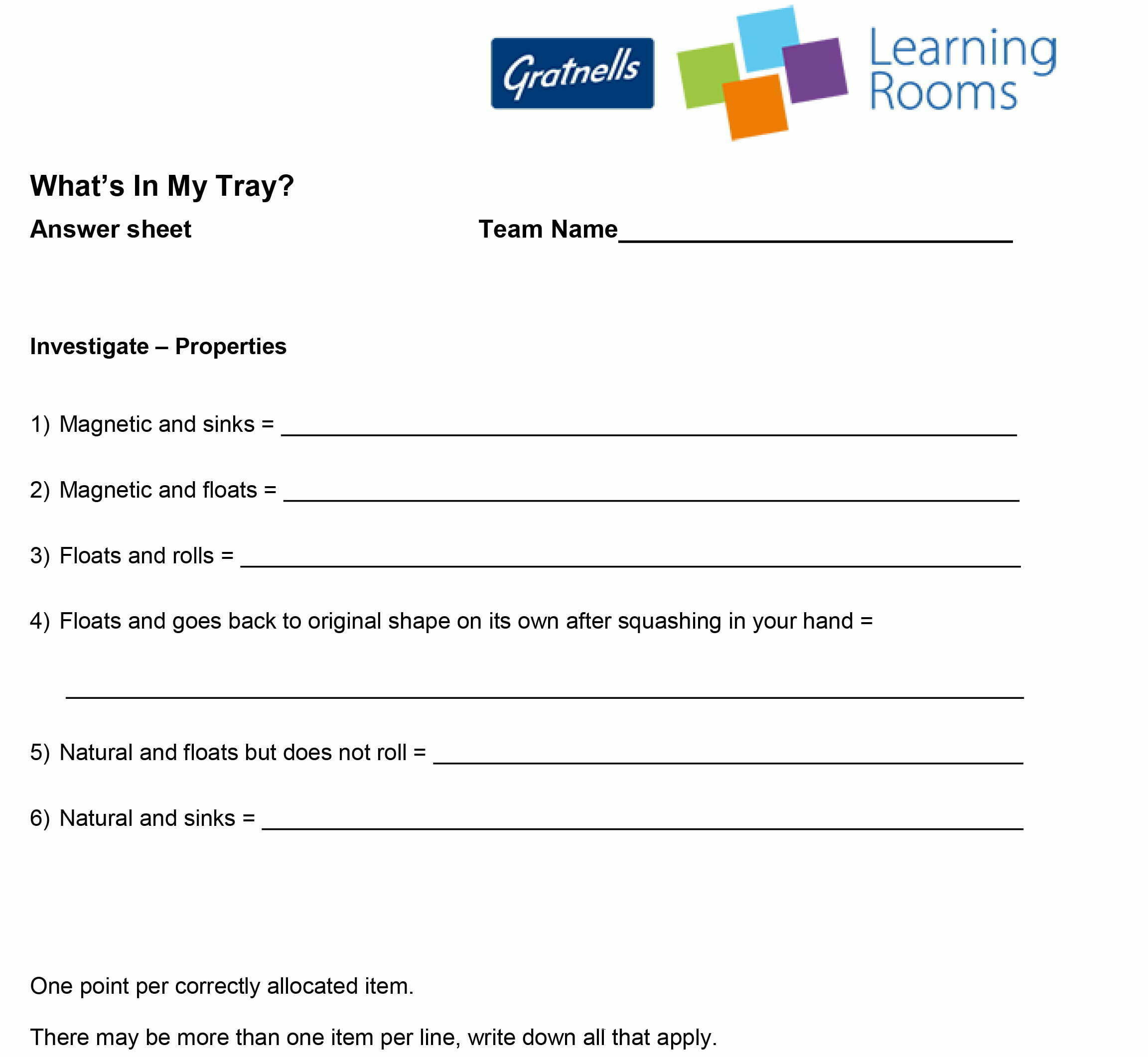Investigate properties
This activity was created as part of a Gratnells What’s In My Tray CPD workshop for primary science teachers and teaching assistants to support practical work and delivery of the curriculum. It can be carried out as a stand-alone activity for students or combined with other activities from the session to form a STEM carousel.

You will need (per team of 4):
- 1 x Shallow Gratnells (F1) tray with lid and 30-section insert
- 1 x Deep or extra deep Gratnells tray with lid
- 1 x Shallow Gratnells (F1) tray with a 6-section insert
- Tap water sufficient to half fill the deep or extra deep tray
- 4 x Magnets
- Absorbent cloths or tea towels
Various items to investigate:
- 4 x Paper clips
- 4 x 5 cm2 pieces thick aluminium foil
- 2 x Conkers
- 4 x Acorns
- 2 x Metal screws or bolts
- 1 x Lego person
- 1 x Plastic dinosaur
- 4 x Ping pong ball
- 1 x Small round bath/baby sponge
- 1 x Foam ball
- 3 x Large marbles
- 4 x Green leaves
- 4 x Brown leaves
- 2 x Pine cones
- 1 x Large marble sized ball of sticky tack
- 2 x Wooden wheel
- 2 x Plastic milk bottle lids
- 3 x Duplo pieces
- 1 x Metal spring
- 1 x Coin
- 2 x Pebble or small stone
Tips: Use the absorbent cloths or tea towels to mop up water drips or spills and for drying wet objects at the end of each rotation. You could also place the deep tray inside in a large Gratnells art tray and work within the art tray, this would further contain any spills and drips.
This activity also works for individuals or smaller teams, just increase the amount of time allocated to complete it. All the equipment can be reused and the activity repeated multiple times.
Preparation:
- Half fill the deep Gratnells tray with tap water and put the lid on.
- Organise all the other objects and magnets into their own sections of the 30-section insert in the shallow Gratnells (F1) tray and put the lid on.
- Keep the cloths/towels nearby in case of any drips or small spills.
- Test all the items and check and modify the answers prior to commencing the activity, items such as coins, screws and bolts have different properties depending on the specific ones you choose to include.
What to do:
- Approach the trays and lift the lid
- Investigate the properties of the objects in the shallow tray and identify which objects match up to the properties listed below.
- Use your senses, the table, water tray and magnets to identify the properties of each item.
- Write your answers down on the sheet provided
For example, 1) red and wobbly = jelly
- Group and sort all the objects into the tray with the 6-section insert, using one section for each set of properties found on the the answer sheet.
- Take a photograph of the grouped and sorted objects in the 6-section tray insert to evidence your work.
Tidy up time:
- Dry each object before returning it to the 30-section insert.
- Replace the tray lids.
- Take your answer sheet with you if you are moving on to another activity.
Match the objects to the following properties:
- Magnetic and sinks =
- Magnetic and floats =
- Floats and rolls =
- Floats and goes back to original shape on its own after squashing in your hand =
- Natural and floats but does not roll =
- Natural and sinks =
Tip: There may be more than one object for each set of properties.
Answers:
- Magnetic and sinks = paper clip, screw, magnet, coin (weakly magnetic), spring
- Magnetic and floats =
- Floats and rolls = conker, acorn, pine cone, ping pong ball, sponge, foam ball, wooden wheel
- Floats and goes back to original shape on its own after squashing in your hand = sponge, foam ball, evergreen leaf?
- Natural and floats but does not roll = green leaf, brown leaf,
- Natural and sinks = stone
Please note: the answers may differ if the items provided for testing have different properties, for example, a rectangular sponge would not roll, neither would a flat sided conker. Adapt the properties and answers to suit the items you have provided.
Other things to try:
- Give each group their own shallow tray with an empty 30-section insert and invite them to venture both outside and around the room to collect a range of different objects to test. Ask them to make predictions before testing the new objects and then group and sort them according to whatever properties they choose.
- Invite the participants to create their own investigations and then swap trays and try them out on their friends.
- Share your photographs on social media using #WhatsInMyTray
Health & Safety
As with all Gratnells Learning Rooms What’s In My Tray activities, you should carry out your own risk assessment prior to undertaking any of the activities or demonstrations. In particular, when working with water, be sure to wipe up any drips or spills promptly to reduce risk of slips and falls.


